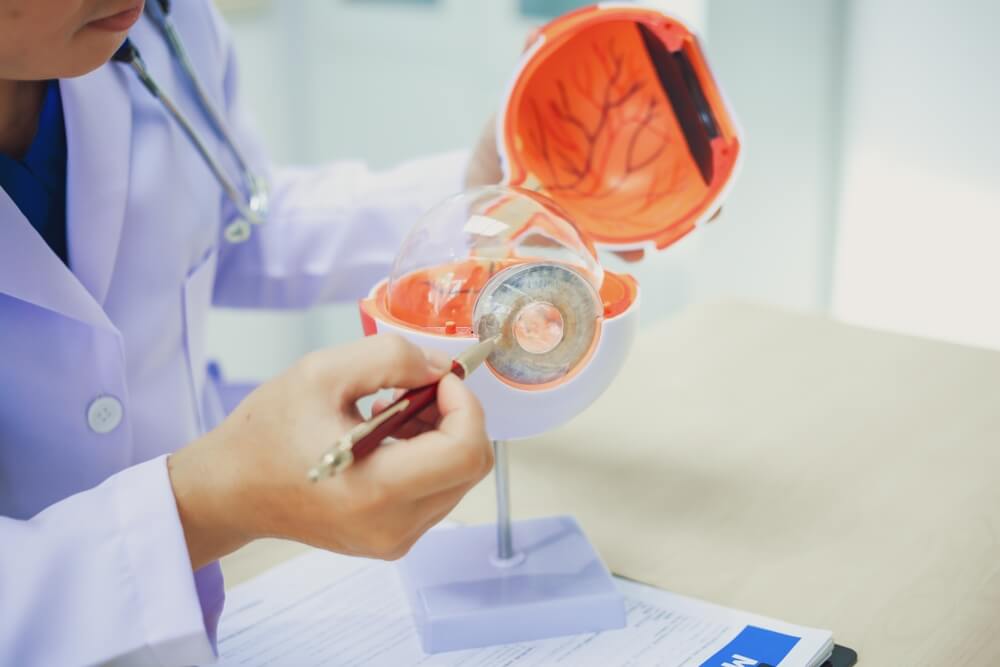For those living with diabetes, eye health is critical. Diabetes can affect multiple organs in the body, including the eyes, often without immediate symptoms. Regular eye exams are not just a preventative measure—they’re a necessity for maintaining overall health. But when should you consider a diabetic eye exam? Understanding the importance of early detection and the steps you can take to protect your vision can make all the difference in managing diabetes-related complications.
The Importance of a Diabetic Eye Exam
A diabetic eye exam is a specialized assessment designed to catch early signs of eye-related issues caused by diabetes. It is recommended that diabetic patients schedule their first eye exam as soon as they are diagnosed with diabetes, or when blood sugar levels become concerning. This is crucial because the eyes are the only place in the body where blood vessels can be observed without invasive surgery. Eye care professionals can detect early signs of diabetes-related damage by simply examining the eye.
Why Timing Matters
The sooner you undergo a diabetic eye exam after diagnosis, the better your chances of managing any potential eye complications. In fact, many healthcare professionals recommend this exam shortly after a diabetes diagnosis. This proactive approach can reveal conditions like diabetic retinopathy, which can lead to vision loss if left untreated. For some individuals, the first signs of diabetes may even be detected during an eye exam before an official diagnosis.
If an eye exam reveals any concerning signs, such as diabetic retinopathy, the severity of the condition will dictate the follow-up schedule. In mild cases, such as nonproliferative diabetic retinopathy (the earliest stage of diabetic eye disease), a yearly eye exam may be sufficient. However, in more severe cases, where blood sugar is poorly controlled or the retinopathy progresses, follow-up exams may be needed every three to six months.
What Happens During a Diabetic Eye Exam?
A diabetic eye exam typically includes a comprehensive eye evaluation with a retinal scan. The goal is to assess the overall health of the retina and blood vessels in the eye. This is critical for detecting diabetic retinopathy, a condition where the blood vessels in the retina become damaged due to high blood sugar levels.
During the exam, your eye doctor will likely dilate your pupils to get a better view of the retina. They may also use imaging technology, such as optical coherence tomography (OCT), to get a detailed look at the retina’s layers. These steps are important in detecting any early signs of retinopathy or other diabetes-related eye conditions.
Nonproliferative vs. Proliferative Diabetic Retinopathy
One of the most common conditions detected during a diabetic eye exam is diabetic retinopathy, which can be classified into two main types:
- Nonproliferative Diabetic Retinopathy: This is the early stage of diabetic retinopathy. It occurs when the blood vessels in the retina begin to weaken and leak fluid or blood. This stage is typically mild and may not require immediate treatment, but regular monitoring is essential.
- Proliferative Diabetic Retinopathy: This is a more advanced stage, where new blood vessels start to grow in the retina. These new vessels are often fragile and prone to leaking, leading to more severe vision problems. This stage requires closer follow-up and, in some cases, immediate treatment.
The Frequency of Follow-Up Exams
The frequency of diabetic eye exams depends on your individual health and the findings of your initial exam. If your eye doctor does not detect any signs of diabetic retinopathy, they may recommend annual check-ups. However, if early signs of retinopathy are found, you may need to be seen every three to six months to monitor the progression of the disease.
It’s important to follow your doctor’s recommendations for follow-up exams based on your systemic health. Consistent monitoring is key to preventing more severe conditions down the road. With proper management and regular check-ups, many patients can return to a yearly eye exam schedule.
Managing Blood Sugar for Better Eye Health
One of the most important factors in maintaining eye health for diabetic patients is controlling blood sugar levels. Poorly controlled blood sugar can accelerate the progression of diabetic retinopathy and lead to further complications. Working closely with your healthcare provider to manage your blood sugar levels can reduce the frequency of follow-up exams and help preserve your vision.
Conclusion

One of the biggest misconceptions about diabetic eye health is that symptoms will appear before vision problems arise. Unfortunately, this is not always the case. Many diabetic eye conditions, including diabetic retinopathy, can progress silently, with no symptoms in the early stages. By the time vision problems are noticeable, the damage may already be significant.
This is why scheduling a diabetic eye exam as soon as possible, even if you’re not experiencing symptoms, is crucial. Early detection can help manage and treat eye conditions before they become severe. Contact Art of Optiks today to schedule your diabetic eye exam and take control of your eye health.




